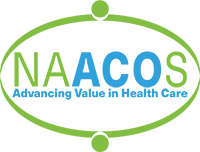|
July 7, 2022 Meena SeshamaniDeputy Administrator and Director, Center for Medicare Centers for Medicare & Medicaid Services Hubert H. Humphrey Building 200 Independence Avenue, S.W. Washington, DC 20201 RE: Improving the Beneficiary Notification Letter in the Medicare Shared Savings Program Dear Deputy Administrator Seshamani: The National Association of ACOs (NAACOS) applauds the Centers for Medicare & Medicaid Services (CMS) for its commitment to advancing accountable care. We publicly supported last fall’s strategy refresh from the Innovation Center that set a goal to have all Medicare beneficiaries in a relationship with a provider accountable for their quality and total cost of care by 2030. This is a worthy and valuable goal that’s needed to put Medicare spending on a more sustainable path while improving the quality of care delivered to more than 64 million Medicare patients. We look forward to future rulemaking and other work that take these ideas from paper to action. NAACOS represents more than 400 accountable care organizations (ACOs) participating in a variety of value-based payment and delivery models in Medicare, Medicaid, and commercial insurers. Serving more than 13 million beneficiaries, our ACOs participate in models such as the Medicare Shared Savings Program (MSSP), the Global and Professional Direct Contracting Model (GPDC), and other alternative payment models (APMs). NAACOS is a member-led and member-owned nonprofit organization that works to improve quality of care, health outcomes, and healthcare cost efficiency. To achieve CMS’s stated 2030 goal, much needs to improve around beneficiary communication. Too often, patients misunderstand the goals of accountable care, the work being done by ACO providers, and what it means for their care. NAACOS absolutely wants to have the best communication with patients and to ensure that those communications are done in a way that eliminates confusion and heightens information about their care. Patients have a right to know about the care they’re receiving, so let’s get it right. NAACOS was pleased to see that CMS began reaching out to ACOs in May to solicit feedback on ways to improve the beneficiary notification letter. These are standard written communications sent annually to all traditional Medicare beneficiaries letting them know they’re receiving care in an ACO. The agency asked questions about patient confusion, what’s not included in the notifications, making informed decisions on care, how ACOs explain their quality and financial incentives, and other areas. NAACOS wanted to provide some feedback we’ve received from our members on ways to improve this letter. As CMS is already aware, many ACOs believe that the letter is written in a way that generates confusion. It’s written at a ninth-grade reading level and too often doesn’t resonate with patients. It contains industry jargon such as “voluntary alignment.” There’s a less than clear explanation of ACOs in general and zero information about the specific ACO delivering care for the patient. There’s also little information about the benefits of being in an ACO versus traditional Medicare. At the very least, patients should be reassured they don’t have to do anything differently and that their coverage has not changed and will not change. NAACOS members shared with us that when mailing the notice, many ACOs saw between 2 percent and 5 percent of patients opting out of data sharing. Many patients were confused by the notice and believed it was a scam they were receiving. Others were concerned about the government or other third parties having access to their data. Instead of wordsmithing a single form letter that’s sent to 11 million Medicare beneficiaries, a better method would be for CMS to allow flexibility for ACOs to draft their own letter that’s approved by CMS in much the same way the agency approves ACOs’ marketing materials. CMS could provide standards and expectations for what letters must and cannot say. For example, there must be a section on protections and patients’ freedom of choice to see any willing provider, differences between ACOs and private health plans, including HMOs and Medicare Advantage. But in letting ACOs draft their own letters, ACOs could provide a better explanation of their care delivery changes that result from their ACO work. They could add specificity around their networks, workflows, and waivers that offer ACO patients an enhanced level of care. CMS has a clearly established mechanism for approving ACOs’ marketing materials. This is a process where ACOs send to CMS for approval materials that are used to “educate, solicit, notify, or contact Medicare beneficiaries or providers and suppliers regarding the Shared Savings Program.” CMS will review the materials and either approve or deny their use. If CMS doesn’t approve the material within five days, it’s deemed acceptable. This is a well understood process and has been in used in MSSP for years. Flexibility should also be extended to delivery methods. Providing ACOs this flexibility would help further eliminate patient confusion. For example, the number of opt-outs dropped when ACOs began sending letters electronically, such as through email and patient portals, which was allowed starting in 2019. NAACOS appreciated the electronic option when it was added and encourages CMS to add more flexibilities in delivery modalities, especially those that are less burdensome and reduce patient confusion. Lastly, NAACOS hopes as part of CMS’s recent outreach that the agency has solicited the input of beneficiaries and patient advocates as part of its rethinking these annual notifications. Thank you for your attention on this important issue and for your consideration of our feedback. NAACOS looks forward to engaging with CMS further on ways to improve beneficiary communications as they are critical to expanding the reach of accountable care and success of patient engagement activities. Sincerely,
Clif Gaus, Sc.D. |

